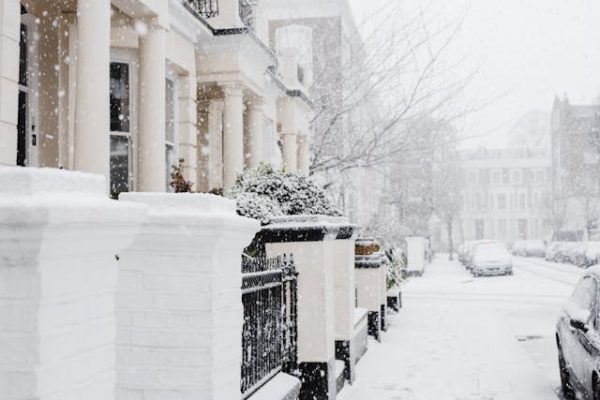When it starts raining, what do you do? You run inside your house before you’re soaked. The same goes for scorching heat, heavy snow, ice… But what about your house? Where does it hide from the weather?
It doesn’t. It just stands there, day after day, in the sun, sleet, wind, snow and, over time, it gets damaged. The thing about this kind of damage is, it happens slowly. Actually, it’s so slow you don’t even notice it until it’s too late. Water gets into the tiniest cracks, rots wood, and makes the foundation weaker. Wind loosens shingles, rips the siding, and what used to be a small gap is now a big, expensive problem. The changes in temperatures makes the materials expand and contract, so the paint on your walls starts to crack and peel.
The good news is, you can stop all this before it gets out of control, so let’s see how.
Signs of Damage
Damage from the weather doesn’t happen overnight, so if you want to prevent it, you’ll need to know how to recognize those early signs that aren’t that noticeable.
Here’s what to look out for.
1. Cracks in Walls and Foundations
Cracks aren’t cosmetic flaws – they can be a sign of a big problem. With the temperatures changing during the course of the year, materials used for building expand and contact. As time goes on, that creates stress cracks in the structure itself.
If there’s no proper drainage, that will make matters even worse because the water will collect around the foundation and make it weaker. Small cracks will get bigger and you’ll notice your floors aren’t even and there might even be structural instability.
2. Peeling or Faded Paint
If the paint on the outside of your house is peeling, bubbling, or fading, it means that your home’s protective barrier is breaking down. Usually, moisture is to blame for this because it can seep into walls and cause the paint to not adhere anymore. If you don’t handle this, you’ll notice mold growing, the wood rotting, and other kinds of damage related to water.
Sun can also damage the paint and make it less vibrant.
3. Leaks and Stains from Water
If you notice a water stain on your ceilings or walls, it means water is getting in where it shouldn’t. Even a small leak can cause mold, rot, and damage the insulation if you don’t take care of it right away.
Unfortunately, water damage is tricky and it usually doesn’t show up right away, which is why you need to investigate any discoloration or damp patches as soon as you notice them. It can also damage your panes, which is why replacement windows are often popular if the framing has rotted.
4. Warped or Swollen Doors and Windows
Your doors and windows used to close so smoothly, but now they don’t, so what could be the matter? Well, the weather is one of the possible culprits. When it’s rainy and humid, wood absorbs moisture and swells, so it moves harder. Then, when it gets hot and dry, it shrinks, which causes gaps and drafts.
How to Prevent Damage
Regular maintenance is a good place to start, so make sure you clean out your gutters regularly so that water doesn’t overflow and damage your siding and foundation. If you notice cracks and gaps in your walls and windows, seal them to keep the moisture out. Your roof deserves attention, too, so if you notice damaged shingles and leaks, fix what needs to be fixed or you’re looking at big issues down the line.
Weather-resistant paints and coatings are an excellent form of protection against moisture and damage from the sun. You can even upgrade your doors and windows to the storm-resistant kind.
Then there are the outdoor structures, like sheds and fences. They get weaker as time goes on, so reinforce them and give them a coat of waterproof sealant so they don’t warp and rot. If there’s anything already damaged, handle it immediately. This means you might need replacement shed doors, new fence posts, boards, etc.
Landscaping can help, too. For example, if you’re strategic about where you plant your trees, they can block wind. Just keep in mind that you need to trim them regularly or you risk damage from falling branches.
Conclusion
Your home shouldn’t have to suffer just because it’s raining, sunny, snowing, etc. And it won’t if you stick to a simple maintenance schedule and if you periodically check for early signs of damage. That small crack you might not be paying attention to could cause you a fortune to repair in the future when it causes structural issues, so why not take care of it on time?
Maintenance here, a few upgrades there, and a tiny bit of extra care can keep your home in top-notch shape regardless of what nature throws its way.

